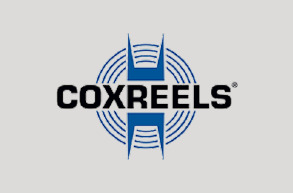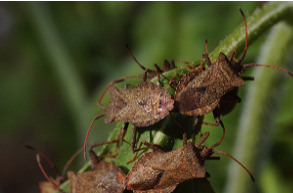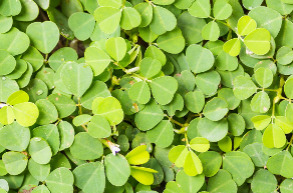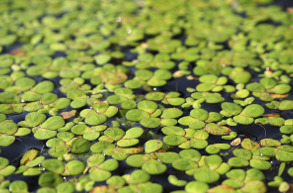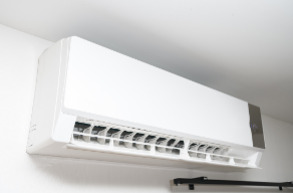Sod Webworm Control
Most Effective Products
Sod Webworm Control: How To Get Rid of Sod Webworms
Sod webworms are notorious for invading lawns and damaging turf and plants. Also known as turf webworms, Sod Webworms are the larval or caterpillar stage of the small white-brown moth. They are about 1 inch long in this stage and can be found munching on blades of grass in a yard.
These lawn pests typically become a problem for cool-season turfgrasses in the fall. Signs of Sod Webworm damage comes in the form of brown patches of dead grass where they have been focusing their feast. Sod Webworms overwinter and then emerge in the spring with a big appetite.
While Sod Webworms are harmless to humans, they are damaging to lawns. If you have an infestation of these caterpillars, they will do a number on your lawn unless you intervene.
By following our professional DIY guide, you can get rid of a Sod Webworm infestation yourself. Simply arm yourself with the products we recommend and follow our step-by-step directions to eliminate a Sod Webworm invasion quickly and affordably.
Identification

Sod webworms are the larval stage of a species of moth from the Crambus genus. When they are in this caterpillar stage they are about 3/4th of an inch long with tan, grayish brown or light green bodies that have dark spots on them. They also have a dark head capsule.
There are about 20 different species of Sod Webworm and they are known for having large appetites in the early larvae stage and are very destructive to lawns they are found in. As adults, they don't feed on grass but seeing active moths in the area makes it likely that eggs are nearby.
Inspection
After you have correctly identified the pest on your turf to be Sod Webworms, you can then move forward with an inspection. Since they are called "sod" webworms, it would be wise to check the sod of your lawn and inspect for the intruders and determine how big of an infestation is present. Multiple generations of Sod Webworms occur throughout the year with one forming in the spring and the second generation showing up in the fall.
Where To Inspect
You will be primarily inspecting your lawn to see if there is any evidence of an active infestation, usually wherever there are discolored or brown patches of lawn. When the Sod Webworms are inactive, they will hide in silk-lined burrows in thatch and soil.
You can flush them out and check if they are present by using a soapy water solution and pouring it over about a square foot of your turf. After the solution soaks for a few minutes, check to see if Sod Webworms are floating on top of your grass. If you see over a dozen of them, it would be safe to assume you have an infestation that should be treated
What To Look For
You should be looking for active Sod Webworms as well as grass damage inflicted by the pests. Sod Webworm damage can appear similar to a turf disease with discoloration of grass and spots of dead grass. Timing is important when treating sod webworms. These bugs are known to lay a lot of eggs and it would be best to control them before they hatch and add to the damage.
Treatment
Once you have completed the inspection, you should then prep your lawn for chemical treatment. Before applying chemicals, we recommend putting on personal protective equipment to keep yourself safe during application. The products we recommend are Reclaim IT and Bifen LP Granules because they kill infestations quickly upon contact and have a long residual effect. This combination delivers a solid 1-2 punch of surface and sub-surface control.
Step 1 - Apply Bifen LP Granules to Lawn
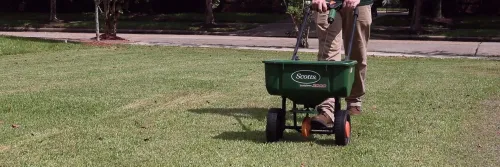
Bifen LP is granular insecticide that is labeled to control many turf pests, including Sod Webworms. Start by first calculating the square feet of your lawn or treatment area. Do this by measuring your lawn's length and width in feet, and then multiplying them together (length x width = square footage).
To treat for Sod Webworms in your lawn, apply Bifen LP granules at a rate of 1.15 pounds per 1,000 square feet. We recommend using a push broadcast spreader to apply the granules, similar to applying fertilizer. For smaller patches of lawn, you can also use a hand spreader.
Load your spreader with the proper amount of Bifen granules based on your square footage. Broadcast the half the granules in parallel lines once across the area and then at a perpendicular angle (like a grid pattern) the second time around so that the granules are evenly distributed over your entire lawn.
Once Bifen LP has been applied, it should be activated by water or a liquid concentrate. This will be done with Reclaim IT in the next step.
Step 2 - Mix and Apply Reclaim IT to Lawn
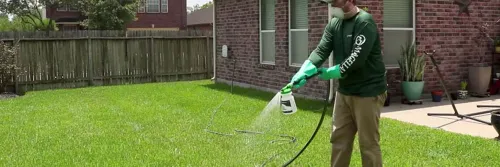
Reclaim IT is a broad-spectrum insecticide that is labeled for treating Sod Webworms. Reclaim IT doesn't only activate the Bifen Granules, but it will also kill Sod Webworms exposed to the product along with a long residual effect that continues to kill for up to 90 days after application.
To apply Reclaim IT, simply mix water in a hand pump or hose-end sprayer then add Reclaim IT at a rate of 0.18 to 0.25 fl. oz. per gallon to cover 1,000 sq. ft. You may have to apply a higher rate of 1 oz. per gallon if you have grass taller than one inch or if there is a severe infestation.
We recommend using a 20-gallon hose-end sprayer for the application for a more thorough and easier broadcast application of the insecticide. Make sure the sprayers control valve and water pump are off and then attach the hose-end sprayer nozzle to the hose. Remove the reservoir from the nozzle and then add the proper amount of Reclaim IT and the proper amount of water.
When adding the product to the reservoir, plan to use 2 gallons of water per 1,000 sq. ft. Doublecheck that that water is still off and then reattach the reservoir to the nozzle securely and then begin spraying by pushing forward on the control valve after turning the water on to the hose.
Broadcast the Reclaim IT evenly over your entire yard and garden as opposed to spot treating. Use a fan spray setting to get nice uniform coverage. Reapplication may be necessary until you no longer see sod webworms present. Apply later in the day as sod webworms are most active at night time. We then recommend irrigating lightly with water (1/8th of an inch).
Prevention

The best way to prevent Sod Webworms from returning after you've eliminated them with insecticides is regular lawn maintenance. Keeping your lawn healthy with routine mowing, watering, fertilization, and aeration can deter certain bugs and help your lawn overcome others.
Rake your lawn regularly to remove thatch and expose the Sod Webworm to its natural predators. Give your lawn 1 to 1.5 inches of water once a week and mow your grass at a height of 3 to 4 inches to encourage root growth. You should fertilize on a regular schedule to make sure your turf gets the nitrogen nutrition it needs to fight against pest symptoms.
Finally, a periodic reapplication of Reclaim IT and Bifen LP Granules should be done as a preventative measure to further discourage Sob Webworm activity.
Key Takeaways
- Sod webworms are a destructive turf insect on residential lawns and commercial landscapes. Damage from Sod Webworms initially goes unnoticed by lawn owners but once they multiply to a sizable population, the damage becomes very obvious.
- Our top recommendation for Sod Webworm control is Reclaim IT and Bifen LP Granules. Broadcast both products over your entire lawn.
- To prevent reinfestations of Sod Webworms, keep up with regular lawn maintenance, and apply Reclaim IT and Bifen LP Granules preventatively every 3 months.




















































